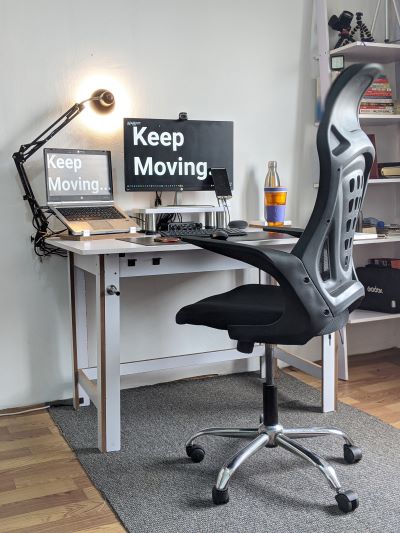

Table of Contents
Solopreneur or entrepreneur?
From the outside, they might appear the same.
Here’s the challenge.
Tell folks you’re an entrepreneur, and they understand.
Tell them you’re a solopreneur, and you get odd looks.
When I started my finance firm, I chose the solopreneur model.
After two years, I adopted the entrepreneur model.
What’s the difference between the two models, and why should you understand them?
We’ll tackle those two big questions in this article.
Once you understand the pros and cons of each model, you can choose the model most appropriate to your risk profile, strategy, and work-life balance.
For quick reference, you can use these solopreneur FAQs to answer your questions.
Key Differences Between Each Model
It’s easy to find the similarities between each model, yet there are important differences to consider.
| Solopreneurs: | Entrepreneurs: |
| Start the business on their own | Start the business with a team |
| Use their own money | Get investments and funding from friends and family |
| Make all the business decisions | Can make decisions on their own or with their team |
| Have an appetite for lower risk | Have an appetite for higher risk |
| Create a solution for one problem for a specific group | Create solutions for large-scale problems |
| Start the business from home | Start the business from home or rent space in an office |
[convertkit form=6674065]
Examples of Each Model

Jobs and Wozniak started Apple as a two-person entrepreneurial team.
Sara Blakely started Spanx as a solopreneur.
Is one model better than the other? Nope.
Do they offer pros and cons? Absolutely.
Here’s how solopreneurs and entrepreneurs begin:
How to Start
It’s hard to decide if a solopreneur or entrepreneur fits your personality.
The solopreneur starts a business on their own, and the entrepreneur collaborates with a group.
Solopreneurs pick an industry they know and build a side hustle with a small customer base.
Their initial goal is to confirm product-customer fit and then build out the offer.
Examples of popular solopreneur models include:
- Copywriters
- Social media managers
- Graphic designers
Entrepreneurs can start a business on their own, but a more popular approach is to launch with a team of two to five people.
The team tackles a big problem and looks to scale the business at a rapid pace.
When you start a business, one of your first decisions is how to secure the money you need to get the ball rolling.
A helpful place to start in any solopreneur or entrepreneur business is the Small Business Association.
You can explore SBA resources here.
Who Finances the Business?
The solopreneur and entrepreneur have different sources of funds when they start a business.
The smart solopreneur chats with a financial advisor and CPA to gain insight on a business budget and steps to coordinate the proper business accounts.
A CPA and financial advisor offer pros and cons of various strategies and help balance risks and rewards.
Once the solopreneur earns sales, they often work with a bookkeeper to keep their finances in order.
Entrepreneurs, on the other hand, usually combine their own money with funding from outside investors.
Investors often provide start-up money to cover payroll and operating expenses.
This early-stage investment can provide investors with an ownership stake in the business.
Today’s solopreneurs and entrepreneurs receive funding from unique sources. They also have a different approach to making daily business decisions.
Who makes the Business Decisions?

Solopreneurs and entrepreneurs may take a different approach to making key business decisions.
For instance, if the product launch fails or the service offer doesn’t excite customers, the solopreneur has to find a new solution.
If the internet goes down at 2:30 p.m. or the router explodes during a live webinar, the solopreneur has to find answers.
Perhaps if the neighbor’s cat has IT expertise and makes house calls, the solopreneur can get part-time help.
It’s not optimal.
Finance, operations, social media, marketing, and IT decisions occur every day in the solopreneur’s world.
This 24/7 buffet is a common challenge for a home-based solopreneur.
You can read more about the ups and downs of starting a home business.
Entrepreneurs can typically either make decisions on their own or collaborate with a team.
The entrepreneur can focus on one area (sales or strategy) and delegate other tasks in finance or operations.
Entrepreneurs also have the benefit of working with an advisory board.
Early-stage investors have expertise in many business areas and can advise the entrepreneur on multiple challenges, such as pricing and customer segmentation.
What’s a Typical Work Week?
Solopreneurs can launch their businesses on a full-time or part-time basis.
The majority start part-time to lower their financial risk and maintain balance with their other employment role(s).
A solopreneur will work evenings and weekends to meet with clients, launch an online course, and complete assignments.
The majority of solopreneurs wait until the business can provide 70% to 80% of their employee income before considering going full-time to focus on the new business.
Entrepreneurs, on the other hand, start full-time with their new company.
They are on a fast track to scaling and generating revenue to satisfy their investors.
Since entrepreneurs tackle large-scale business challenges, they work 12–18 hours per day to build their products and go to market.
First-to-market is a key objective for many entrepreneurs and their investors.
The entrepreneur model has to be flexible as they determine how many products to create and where to manufacture them.
How Many Products or Services Should You Create?
The solopreneur and entrepreneur produce different amounts of products and services.
Solopreneurs often combine a low-priced item with a higher-priced offer. A solo copywriter can offer a digital DIY course and offer 1:1 freelance services.
A solo graphic designer can offer a collection of design templates to serve one tier of customers and work with larger clients on specific projects.
Entrepreneurs offer multiple products under one large theme.
A new SaaS company can offer diverse solutions and subscriptions to different customers within one industry.
Entrepreneurs in consumer retail could create multiple shoes, sandals, and socks to suit a wider customer group at unique price points.
The environment plays a key role for both models, and it’s a big decision when one starts the business.
Where is the Right Place for the Office?
A solopreneur and an entrepreneur take a different approach to the workplace. Solopreneurs usually launch their businesses from home.
Their laptop and WiFi connection are their primary tools.
Key topics include space, equipment, permission, and licenses.
The digital nomad model is a popular choice if you want to ‘change’ your home setting.
Digital nomads travel to various countries for extended periods and operate their businesses from a cafe or coffee shop.
The entrepreneur may work from home or in a traditional office setting.
The popular Silicon Valley model of 5–8 entrepreneurs living in one home and working all day and night on a product still exists.
Today, entrepreneurs can work from home and collaborate with their teams via email, online tools, and teleconferencing.
Once the entrepreneur receives funding, they might seek office space to accommodate a larger team.
Frequently Asked Questions
What is an example of a solopreneur?
Common examples include freelance copywriters, graphic designers, SEO specialists, and coaches.
These days, solopreneurs build businesses in hundreds of industries and can run profitable businesses from their home office.
The key is to solve a big problem for your audience and then develop a process or product that is unique.
Which model is more efficient at the start?
Solopreneurs start with a problem they can tackle from home, and they often have the personal funds to start.
Entrepreneurs tackle a larger industry challenge and may rely on investors to provide a financial cushion to start.
How do you know when it’s time to move from one model to the other?
You can evaluate revenue, projected costs, and the next steps to achieve product-customer fit.
If your sales are slow and your expenses are low, you can stay in the solopreneur model.
Once you find success with one product to solve 1 problem, you may opt to expand.
Additional employees come at a cost, yet their ability to help you tackle a larger issue and tap into more revenue makes entrepreneurial revenue attractive.
Choose wisely, and don’t expand too soon.
Helpful Resources
The solopreneur newsletter, Solopreneur Doorway, gives you growth ideas and key insights on the solo business model.
Every Wednesday, it hits your inbox and turns your challenges into more clients and higher sales.
When you’re ready, you can discover your custom, 90-minute coaching session.
In this session, we take a close look at each facet of your business and make sure that your strategy is on point.
Your challenges are unique to you, and they need a custom solution.
Recent Posts
Choose Your Category
About Erik

Erik Duncan has over 17 years of business and finance experience including investment banking, investment management and starting a successful finance company. He received his MBA in Finance from The Wharton School of Business and his MHA from The University of Iowa.
Your Store Causing You Stress?
A free chat with Erik clears your mind and gives you immediate ideas.
"*" indicates required fields

